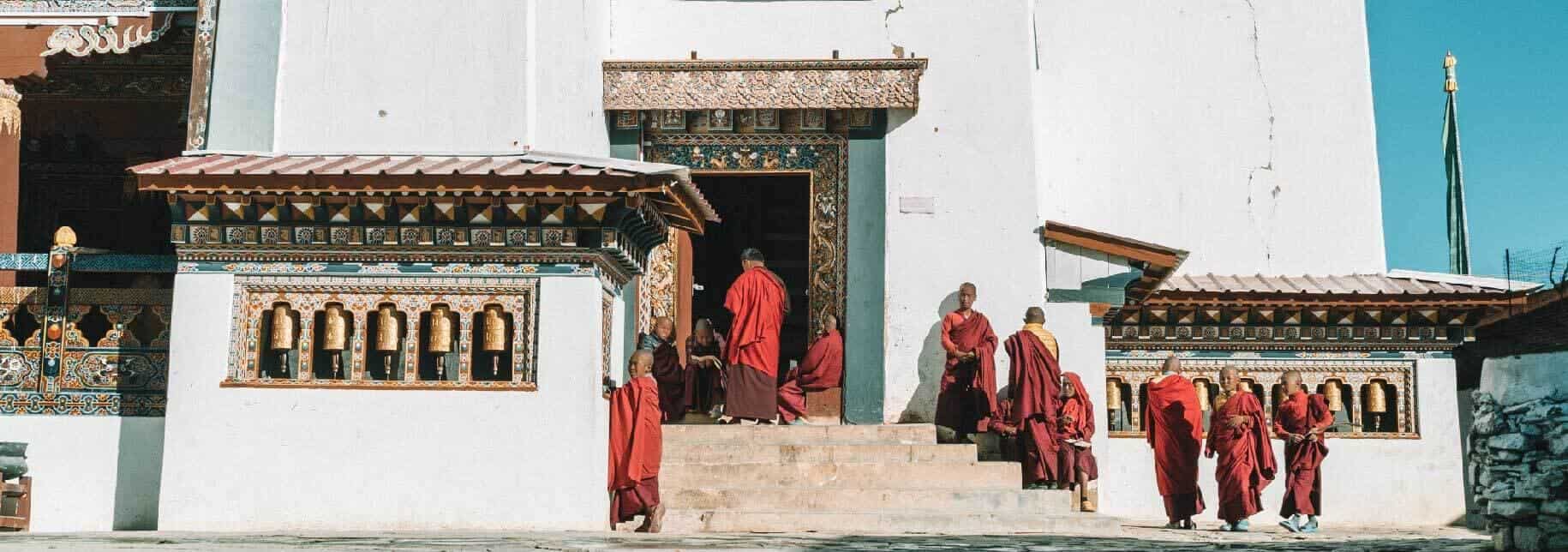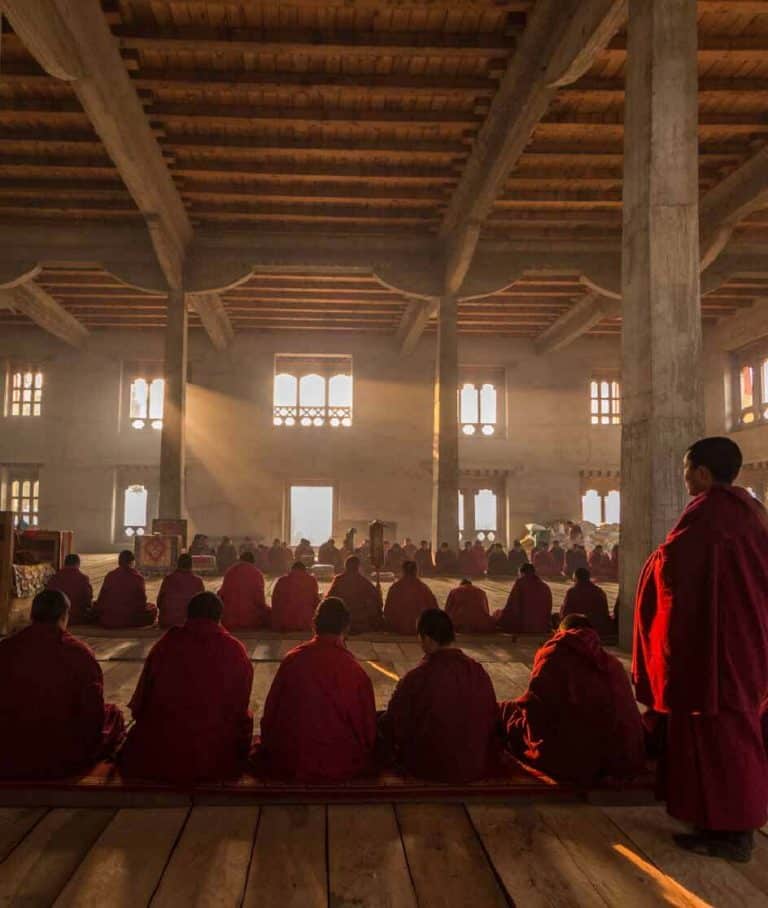Bhutan is the world’s last remaining Vajrayana Buddhist Kingdom, and this ancient spiritual tradition is, to this day, embedded in the very consciousness and culture of the people. Even as Bhutan faces the modern-day challenges of a global pandemic, it remains deeply interwoven into the fabric of the lives of the Bhutanese people.
When the Royal Government of Bhutan announced Bhutan would be receiving its first vaccine shipment in March of this year, Bhutan’s Central Monastic Body, the Zhung Dratshang, conducted a three-day Medicine Buddha ceremony on the day of arrival. And when Bhutan announced that it would begin rolling out its nationwide COVID-19 vaccination program, the date was selected by the most senior monks in the country as the most auspicious day for the program to commence. Buddhism is, without doubt, the bedrock of Bhutanese society and an opportunity to learn about Buddhism in Bhutan offers a deep insight into the country’s history and heritage.
Buddhism in Bhutan has its origins in Tibet and follows the Vajrayana or Mahayana branch of Buddhism. On the 10th of this month, Bhutan paid tribute to one of its holiest saints Guru Rinpoche, who is credited with bringing Buddhism to Bhutan in 810AD. Guru Rinpoche, translated as ‘precious master’, is also known as Guru Padmasambhava, meaning ‘lotus born’. According to Bhutanese legend, he flew to Bhutan from Tibet on the back of a tigress and meditated there for three years, three months, three weeks, three days and three hours. Years later, the famous Taktsang Monastery in the Paro Valley, also known as Tiger’s Nest, was built to mark this holy place. To the Bhutanese, Guru Rinpoche is not just a spiritual leader or a historical figure but a highly enlightened master, regarded as the patron saint of Bhutan. His birthday, celebrated on the tenth day of the sixth lunar month, is marked by religious ceremonies in temples across the country.









